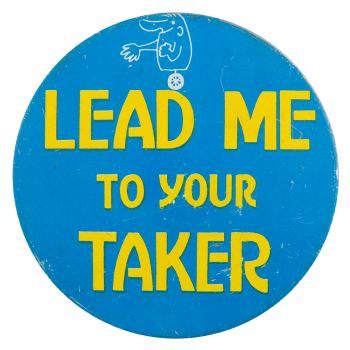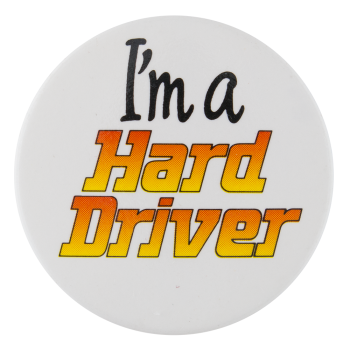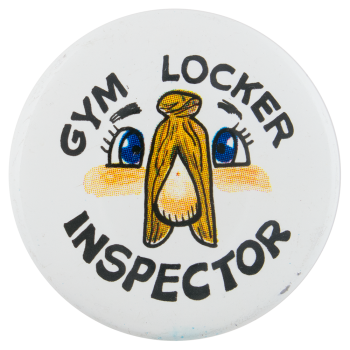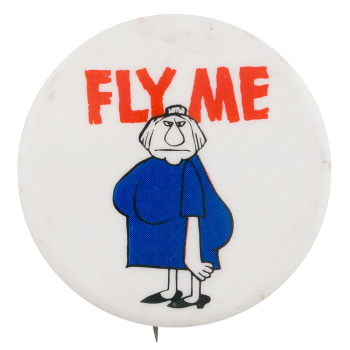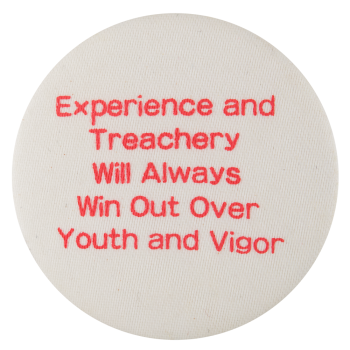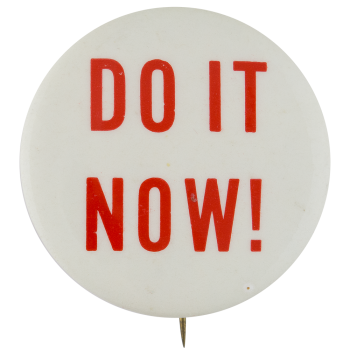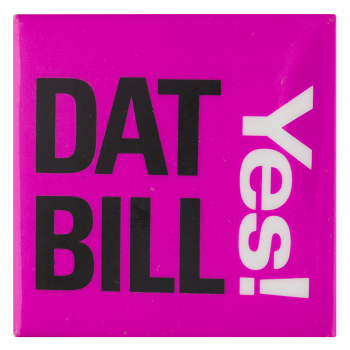Lead Me To Your Taker Blue
| Category | |
|---|---|
| Additional Images | |
| Sub Categories | |
| Text on Button | LEAD ME TO YOUR TAKER |
| Image Description | Yellow text on a blue background with a white illustration of a character with a wheel instead of legs |
| Back Style | |
| The Shape | |
| The Size | |
| Year / Decade Made | |
| Additional Information | “Take me to your leader” is a popular sci-fi phrase that was first used in a 1953 cartoon published by The New Yorker. Since then, it has been stated on both the big and small screens for comic effect. The saying is most commonly uttered by an extraterrestrial being to the first human it encounters after landing on Earth. “Lead me to your taker” is a humorous twist on this well-known cliché that was fixed onto buttons serving as prizes from gumball machines. In the 1970s, individuals could easily deposit coins into the machines and twist the metal lever to receive a pin-back with a catchy slogan. “Lead Me To Your Taker,” “Can’t You Read,” and “Don’t Follow Me I’m Lost” were just some of the phrases on the gumball machines’ buttons. |
| Sources |
Roberts, S. (2012, February 11). What do you say to an alien? New York Times. https://www.nytimes.com/2012/02/12/sunday-review/messages-to-et.html?_r… Times Passages Nostalgia Company. (n.d.). Colorful 1960s-1970s gum ball machine prize pin back buttons with sayings. http://www.timepassagesnostalgia.com/&pm=0&searchkeywords=Culture&sin=9… |
| Catalog ID | IB0337 |

